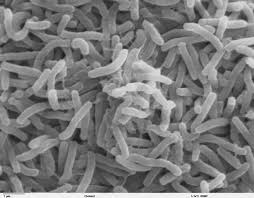Development of a DNA based UltraSensitive-biosensor for the detection of Vibrio cholerae using gold latex nanoparticles

Cholera, caused by Vibrio cholerae, remains a serious global health threat, particularly in areas with limited access to clean water and healthcare. Rapid and accurate detection is essential for effective outbreak control and treatment. However, current diagnostic methods are slow, labour-intensive, and often lack the sensitivity and specificity needed for early detection. Culture-based techniques take time, while existing electrochemical genosensors struggle with accuracy due to nonspecific signals from unrelated DNA (PCR amplicons). There is an urgent need for a reliable, fast, and highly specific detection method that is also simple and affordable for widespread use.
The project offers a novel solution through the development of an enzyme-based electrochemical biosensor designed for the rapid and accurate detection of Vibrio cholerae. This biosensor uses a carbon screen-printed electrode (C-SPE) combined with a two-step sandwich-type DNA hybridisation technique involving two specific DNA probes. It features horseradish peroxidase (HRP) as the signal-generating enzyme, enhancing both sensitivity and specificity. Unlike conventional methods, this approach does not require heat-denaturation or complex purification steps, making it faster, simpler, and more cost-effective. The biosensor is designed for point-of-care and low-resource settings, allowing early diagnosis and rapid response to cholera outbreaks. The platform also has potential to be adapted for detecting other infectious diseases.
The innovation of this project is a new type of electrochemical biosensor that can quickly and accurately detect Vibrio cholerae. It uses a carbon screen-printed electrode (C-SPE) and a special double DNA matching method with an enzyme called horseradish peroxidase (HRP) to boost accuracy. Unlike older methods, this sensor does not need heating or complex steps, making it faster, simpler, and more affordable. It is also portable and easy to use, making it ideal for on-site testing in hospitals, clinics, or remote areas. This approach is not only effective for cholera but can also be adapted to detect other diseases.


